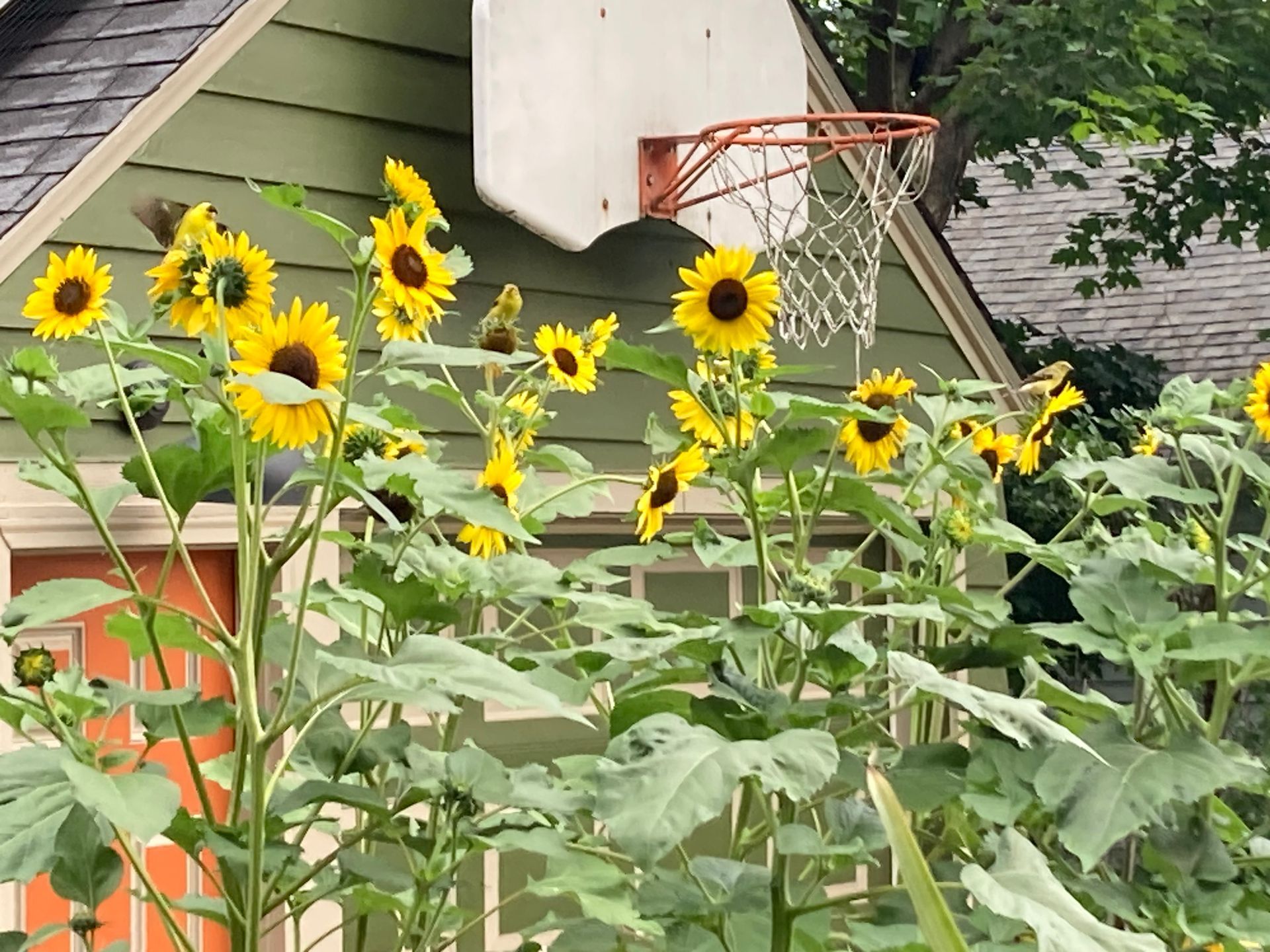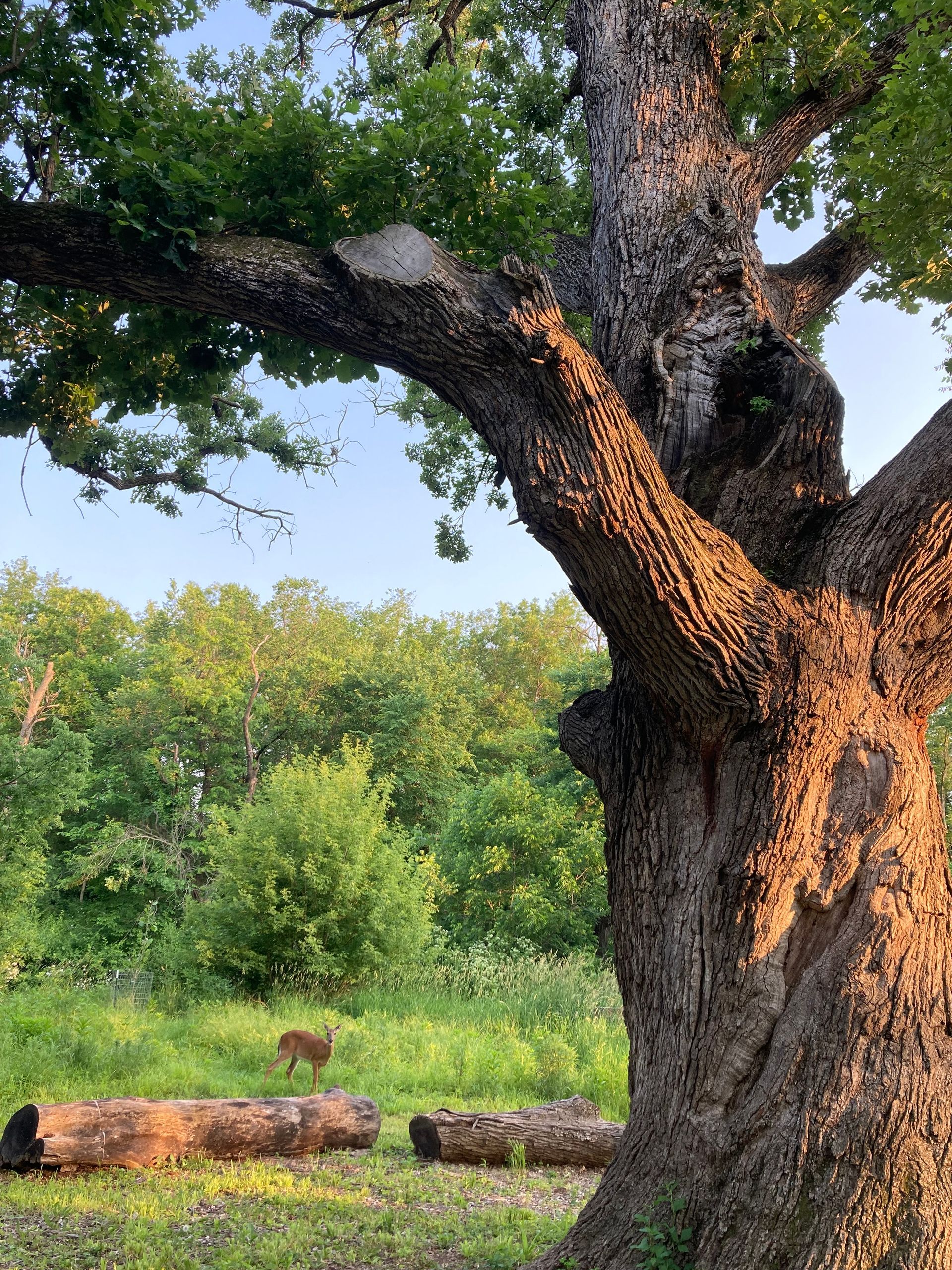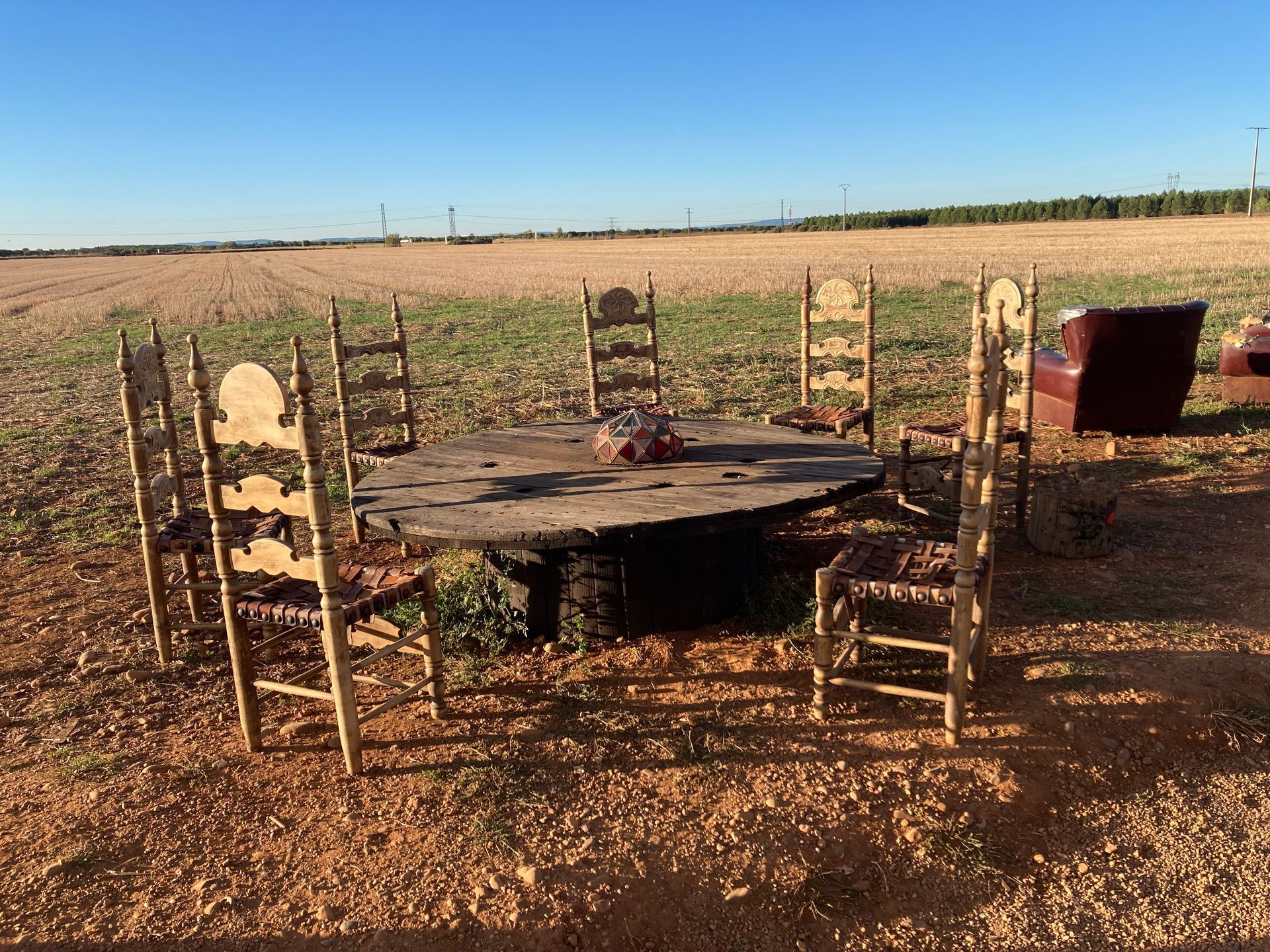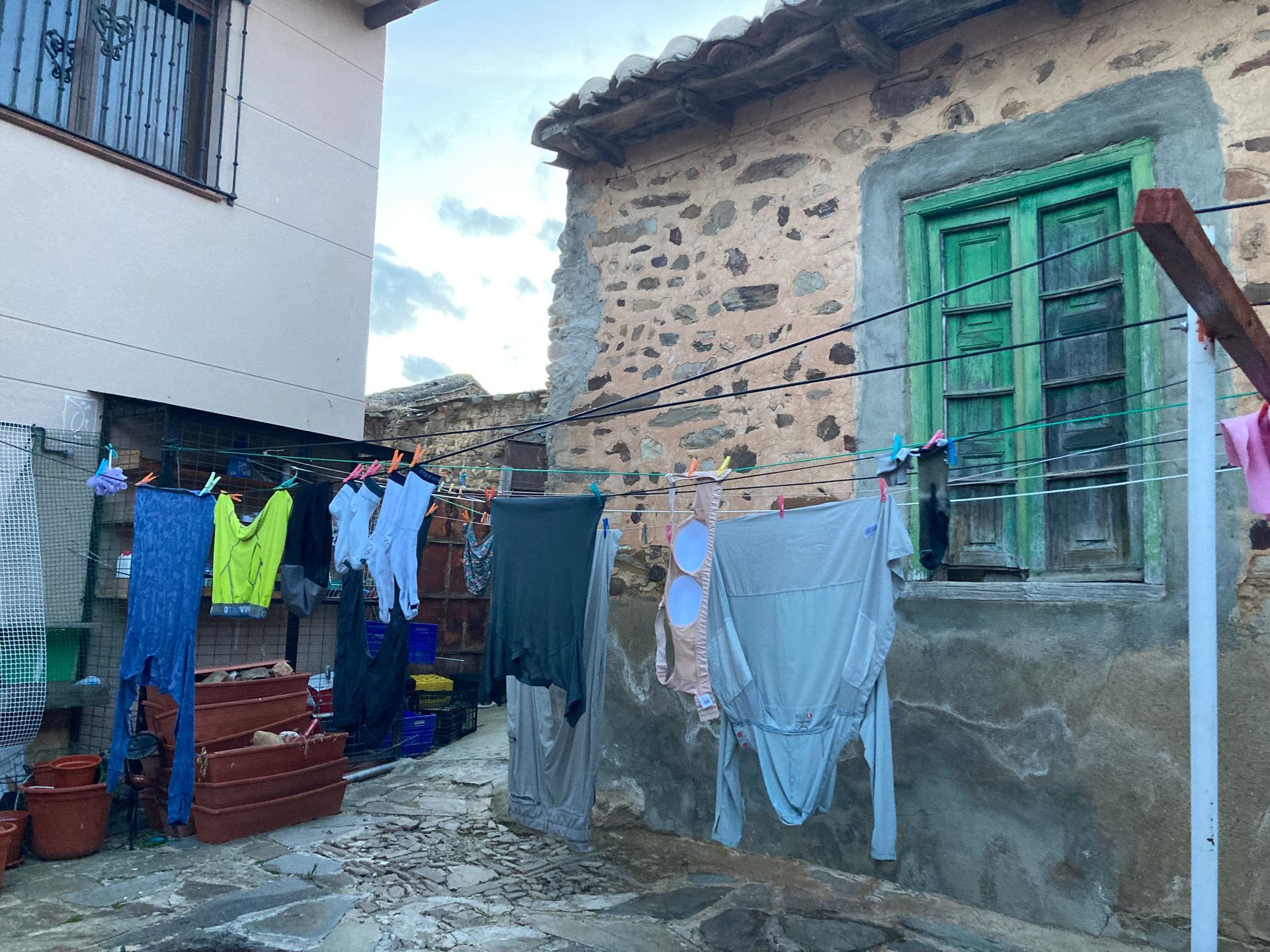Learning from the Sunflower
Learning to allow and welcome the gifts and the mess...
We wake these Iowa July and August mornings and step outside to air heavy with humidity; to the sound of birdsong; to the smell of milkweed flower and lilies; to coneflower, beebalm, and ripening tomatoes.
But perhaps most delightfully, we wake to the amazing sunflowers.
Throughout the spring, the seedlings of these mighty flowers pop up cheerily in newly planted pots of geraniums, moss rose, petunia and begonia. “Weeds” in this context, I pluck them out of the soil with a satisfying tug, careful not to uproot the other young plants. In our backyard, the sunflower seed, dropped by carefree birds or planted by industrious squirrels, took root in random patterns - and they are glorious. These towering yellow flowers, in so many shades and varieties, provide workspace, rest, and play for many, receiving our admiration in return. They turn their heads to the sun throughout their generative days, animated by spirit.
Each day, all day, bees of every size and shape do the work of filling their pollen baskets. These iconic workers of the insect world give us lessons on both holy work and holy rest as we often find them nestled in the flowers sleeping each morning. Some choose individual accommodations – one bee per flower. Others sleep side-by-side, sometimes as many as ten per flower, none having made it back to their nest the evening before. A warm puff of breath can warm these bees back to life, and they’re off to another day of busy “bee-ing”.
As the seeds of each flower mature, our next visitors are the goldfinches. Petals disappear as these little birds industriously pluck them apart, throwing them to the ground and revealing that first row of fresh seed. Filling of bird feeders diminishes as the birds opt for this fresh produce.
The sunflowers are by no means a dainty flower. By the end of July most have grown to over nine feet tall and the sturdy stalks provide new climbing and foraging opportunity. What seeds the goldfinches leave behind, the chipmunks and squirrels rifle through, leaving chunks of flower head strewn about our driveway.
There was a time when the chaos of the sunflowers would have made me uneasy. And in truth, it sometimes still does. These flowers are planted with wild abandon, not in some symmetric, planned order that I may have attempted. They can look like a mess as they are eaten and torn apart, our other native flowers attempting to grow amongst them. These are not the neat flower beds of my younger years!
But I see and know that these flowers, in all their abundance, have many lessons for us.
The pollen of the sunflower is available for just a short season. The bees intuit this and gather all they can during this fruitful time. When the day has been long, they find sacred pause and rest wherever they are able. We, too, have seasons of “gathering” – seasons of career and child-rearing, elder care and community service. Busy lives. We can take a cue from the bees and find sacred rest in a “flower” – morning coffee on the front steps, a short walk alone or with a friend, accepting offered help, a few minutes of prayer. These interspersed moments of awareness can remind us that everything is sacred. As author Paula D’Arcy says, “God comes to us disguised as our life.”
The sunflower goes on to give of itself - to the birds, the squirrels, and to us - as the seasons change. It is no less a sunflower, but it now bows its head as its seeds mature and are dispersed. It continues to stand tall with an inner knowing that it has done, and continues to do, what it was created for. A natural allowing. How do we allow our being and doing to look different as the seasons of our lives change? Where do we find that inner knowing for ourselves?
Perhaps emulating a farmer of parable is a good place to start.
In Matthew 13:29-30, we are told to let the “wheat and weed grow together”. This could be seen as a simple story of “letting God sort it out later”, but I believe the sunflowers teach me otherwise. What looks like weed and chaos may have beauty to offer if only we have the patience to allow it to mature and show its fruit. Can we allow the “weeds” in ourselves to be seen and revealed for what they may become, perhaps even witnessing as they produce their own fruits and feed others? As we learn to do so, we receive the gift of accepting the “messiness” of ourselves and learn compassion for others.
Awareness unfolds as we allow the fruits of our human nature to mature and disperse like the seed of the sunflower.






